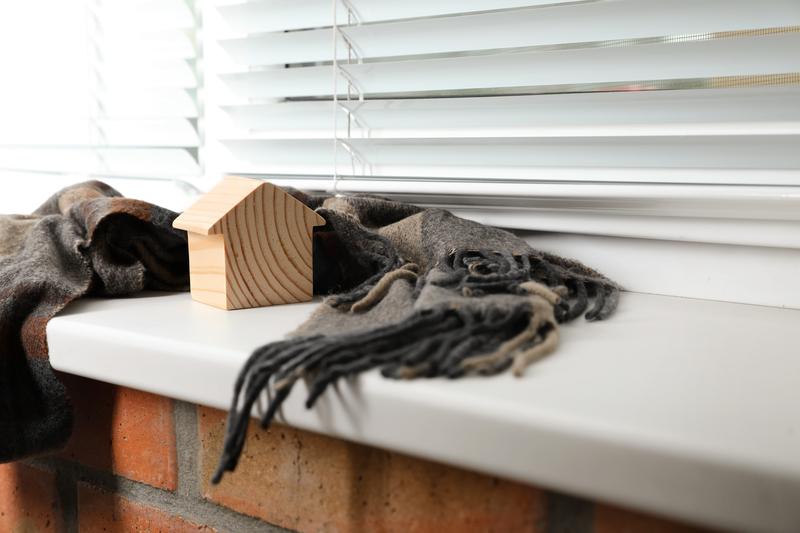
Alternative Ways to Naturally Heat Your House This Winter
The chilliest month of the year is here, and as usual, you're going to need some warmth around the house. As people are rushing to buy all types of heaters, you need an alternative and eco-friendly way of heating your house and saving money in the process. However, there’s no reason to worry—there are plenty of heating options that can serve the purpose without taking a toll on your pockets or polluting the environment. Here are some eco-friendly ways to heat the house during the coldest months and make winter bearable.
Alternative Heaters
When it comes to heating the house, using electricity or fuel is not the only option you have at your disposal. Even when you unplug your power socket and turn off the fuel consumption, you can still have the warmth you deserve during winter. Traditional heaters such as fireplaces and space heaters offer great heating alternatives. They are the most reliable and efficient methods you can have in your home. Another option is a wood pellet stove. Just keep in mind that wood pellets require a wood pellet stove or pellet insert.These stoves offer the best heating alternative to those who want to go green because they are made from renewable sources.
Improve Insulation
About a quarter of the heat around the house is lost through the roof during winter. You can ensure this doesn't happen in your house by installing insulation through the loft. Your walls are also a contributing factor to the lost heat, so you shouldn't ignore them. You can get some cavity wall insulation and save more than $100 in heating every year. Don't forget the attic when insulating the house because that can also allow some cold air inside. Confirm with your energy supplier that your insulation is running as required. You can also get lucky enough and get cheaper or free insulation from your energy supplier, depending on the business relationship that you have.
Use Your Curtains
Curtains are not just protective measures in the house or extra decoration. During winter, your curtains can serve a different purpose by ensuring you get some extra heat around the house. You need to receive heat from the sun during the day, even if it's just a small amount. Don't let the free heat go unused because you badly need it to heat the room. Ensure you open your curtains during the day to let in the sunlight. When it gets dark, close your curtains so that the heat collected during the day is not lost quickly. Your curtains add an extra layer of insulation to your rooms in the winter months. Ensure that warm air stays in and cold air remains outside by filling all the leaks or gaps on your curtains.
Use Rugs
If some areas of your floor are covered with linoleum or tile, they can get extremely cold during winter and even spread to the entire house. Rugs and wool carpets are great heating alternatives to keep your floor warm. Rugs add an insulation layer to the floor. They trap cold air underneath and prevent it from cooling the house. Rugs also keep your feet from coming into contact with the cold surface to ensure you stay warm throughout the day. Ensure you get thicker area rugs to protect your feet from the cold and keep the floor insulated. Rugs can also prevent the heat that's already accumulated in the house from getting lost through the floor. Buy enough rugs in advance as you prepare for winter.
Heat Reflection
Another brilliant way of keeping your home warm while at the same time cutting down the costs is by using radiator panels. The panels have shiny surfaces, which act as heat reflectors. They ensure that heat from your radiator is confined to warming the room and not the walls. As a result, the house remains warm, and very little heat energy is consumed. The beauty of radiator panels is that they are easy to install, and their prices are pocket-friendly. You don’t want a heating system that will cost you an arm and a leg before the cold season is over.
Move Your Sofas
Your sofas could be absorbing the heat meant for house heating during winter. While many people will love to have the sofas near their heating radiators, moving them slightly away from the heat sources can be a great way to save on the heat. Moving them away also allows hot air to circulate freely around the house so that you can get the most out of your home heating sources. This also applies to wet clothes that can absorb heat that should be used to warm your house. Ensure nothing is blocking the warm air circulation or preventing you from getting the most out of your heating system.
Winterize Your Home
You need to prepare your home in advance as you prepare for the winter months. Early preparations make a big difference if you want to increase your ability to survive the freezing temperatures without spending too much on heating sources. You can contact your utility companies to carry out an energy audit at your home. The professionals will give you a list of the things you need to keep your home insulated and possibly save energy. Install some weather stripping on the doors and windows. Insulate the attic, basement, and the exterior walls. Seal all the entry points that are likely to invite cold air inside the house. Ensure you carry out routine maintenance early enough.
There are many heating alternatives to choose from that won’t break your bank. Regardless of your choice, all you need to ensure is that you have enough heat, and your heating system is working as expected. The best choice of a good heating alternative doesn't have to be so expensive but should ensure your home stays warm regardless of how cold the weather may become. Non-fuel-based heating alternatives also ensure you protect the environment without compromising the heat efficiency.
Here’s another article you might like: What You Should Clean Before Winter Hits



Leave a comment